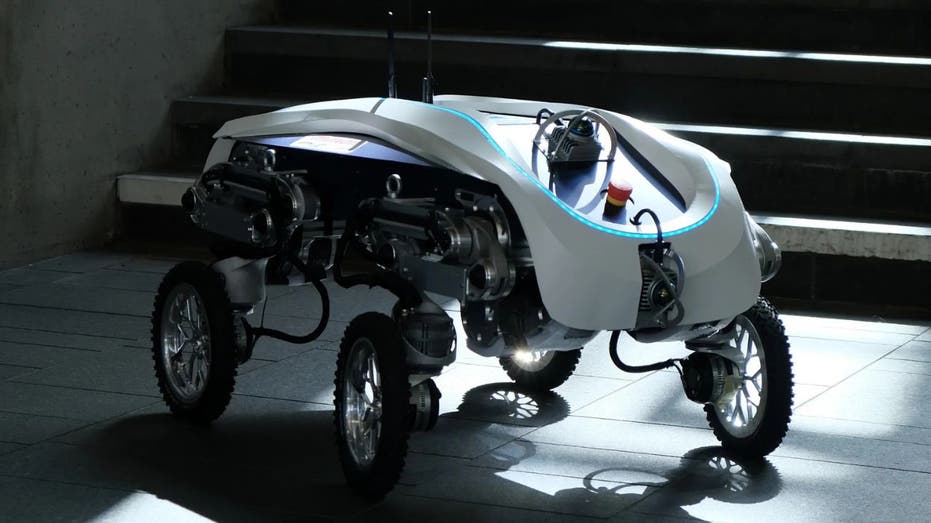Innovative Delivery Robot Autonomously Lifts and Transports Heavy Cargo for Efficient Logistics
Tech expert Kurt “CyberGuy” Knutsson highlights LEVA, the groundbreaking autonomous robot capable of walking, rolling, and lifting 187 pounds for all-terrain deliveries.

Autonomous delivery robots are rapidly transforming the movement of goods within cities and warehouses, yet a significant limitation remains: most models still rely on human assistance for loading and unloading cargo. A new robot named LEVA, developed by teams from ETH Zurich and other Swiss universities, aims to eliminate this hurdle altogether. With its innovative design, LEVA can autonomously navigate environments and independently lift and transport heavy packages, promising a more efficient future for package delivery.
Unlike most delivery robots that either use wheels or legs, LEVA is built with both in mind. It features four legs, each equipped with motorized, steerable wheels. This hybrid mobility system gives LEVA impressive versatility. On smooth urban surfaces, it rolls like a small car, moving quickly and efficiently. When it encounters staircases, curbs, or rough terrain, it locks its wheels and walks or climbs like a quadruped animal. This flexibility enables LEVA to handle the complex landscapes often found in city streets, office buildings, and construction sites.
LEVA navigates through its environment using advanced technology: a combination of GPS, lidar sensors, and five strategically placed cameras. The lidar and cameras provide it with a comprehensive understanding of its surroundings, allowing it to detect obstacles and accurately maneuver even in crowded or changing spaces. One of the downward-facing cameras helps the robot align itself precisely over cargo for seamless pickup and drop-off operations.
A major breakthrough in LEVA’s design is its autonomous loading and unloading. The robot detects a standard cargo box, positions itself over it, then lowers its body by bending its legs. Powered hooks under its frame lock onto the box securely. Once attached, LEVA lifts itself—and the cargo—before setting off to its destination. Remarkably, it’s capable of carrying loads of up to 187 pounds, matching its own body weight.
In terms of size, LEVA is about four feet long and two-and-a-half feet wide, with an adjustable height ranging between two and three feet. This relatively compact footprint allows it to operate in tight urban settings as well as open fields. Its sensors and cameras grant it a keen awareness of its position and environment at all times.
The potential applications for LEVA are diverse. Beyond urban deliveries—where it could bring packages right to doorsteps in buildings with stairs—it could be used on farms to transport supplies across uneven land, ferry tools and materials on construction sites, or deliver essential goods through rubble in disaster areas.
For consumers, robots like LEVA could mean quicker and more dependable deliveries, especially in areas where steps and curbs currently cause delays. For businesses, automating the loading and unloading process reduces the need for heavy manual labor, which can decrease injury risks and lower operational costs.
Moreover, because robots like LEVA can work continuously without breaks, they have the potential to improve efficiency and keep supply chains moving, even during off-hours. In sectors such as agriculture, construction, and emergency response, their all-terrain capability and strength could speed up the movement of crucial supplies where human access is limited or hazardous.
While the first prototype of LEVA has already demonstrated these abilities, further development is ongoing. The engineering team is enhancing its energy efficiency, refining its stair-climbing performance, and working toward fully autonomous operation. Their end goal: integrating LEVA into automated delivery networks capable of tackling real-world challenges seamlessly.
If successful, LEVA’s blend of wheels and legs, coupled with its unique self-loading feature, may set a new standard for robotic delivery solutions. Its arrival hints at a future where deliveries and material transport are faster, safer, and more reliable, benefitting both consumers and businesses alike.




